Currently Empty: R0.00
500 Litres Per Hour Industrial RO System On Skid

About Reverse Osmosis System
Reverse Osmosis is the process of removing dissolved elements from your water. For example, if you have a cup of water. Each time you add a teaspoon of sugar, The TDS will increase. So, the more sugar you add, the higher your tds will be. A filter system will not remove the sugar that’s dissolved in the water. The only way to remove what’s dissolved is the water is to put it through a reverse osmosis system.
Reverse Osmosis is a technology that is used to remove a large majority of dissolved contaminants from water by pushing the water under pressure through a semi-permeable membrane. So if you have to put sweet water through the reverse osmosis system, you will have 2 outputs. Your pure water will have no taste (permeate ), and the water water will be more sweet ( concentrate )
Complete RO System Plant Flow
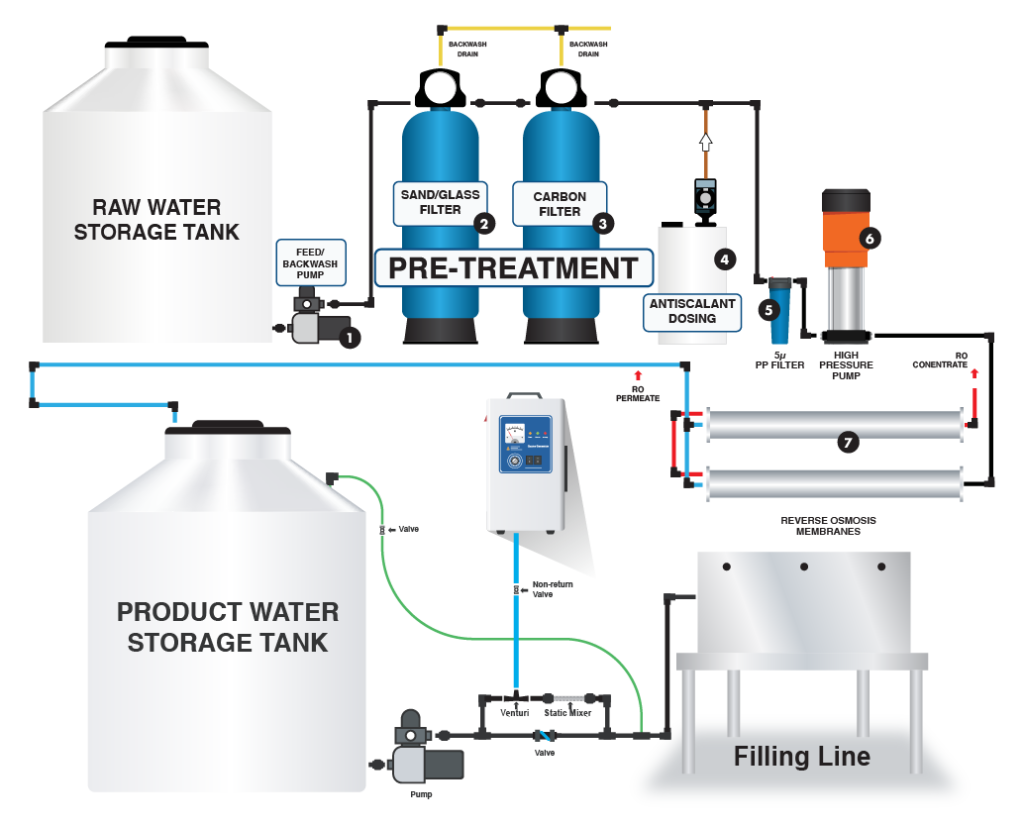
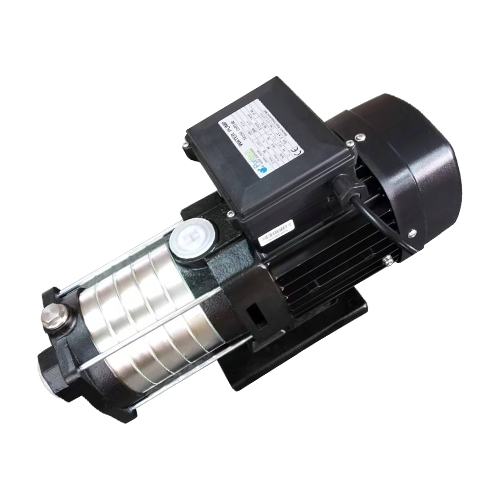
Applications
CHT series are mini horizontal centrifugal pumps, have a wide application in the domestic water supply industry and construction. They are used for:
- Air-conditioning systems
- Cooling Systems
- Industrial cleaning, conveyance, and circulation of liquid.
- Water treatment (Water Purification)
- Domestic water supply
- Boosting, environment
- Other Special usages
Working conditions
- Diluted, clean, non-flammable, and non-explosive liquids
- Liquid without solid grain or fibers
- Liquid Temperature:
- Low temperature: -20˚C ~ +70˚C
- Standard temperature: +15˚C ~ +70˚C
- High temperature: +70˚C ~ +104˚C
- Max. environmental temperature: 50˚C
- Max. operating pressure: 10 bar
- Max. Suction pressure is limited by max. operating pressure
Motor
- 2-pole induction motor;
- Three-phase: 220/380V/50Hz
- Single-phase with input thermal protector
- Insulation class: F
- Protection: IP55
- Continuous duty
Sand/Glass Filter
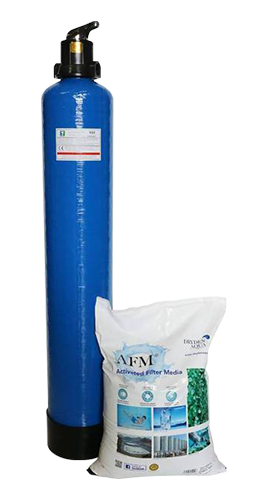
Product Description:
Impurities are removed from water by passing through a bed of quartzite sand of various gradations. The installation of a Sand filter is recommended when a load of turbidity (sand, lime, scales, colloids, etc.) of water is very high, affecting the water quality and resulting in deposits and encrustations on pipelines, boilers, taps, and on domestic and industrial appliances in general. Puritech Multi-Media depth filters typically remove particles 5-15 microns in size or larger. All media included in our filters are carefully selected according to particle size, so the media retains its stratification during backwash and rinse. An automatic backwashing system removes the trapped contaminants within the filter bed and washes them down the drain.
Advantages of A Sand Filter
- Turbidity Removal
- Low Maintenance Required
- Automatic or Manual Control Valves are available
- Designed to achieve High Flow Rate
Sand filters are used as a step in the water treatment process of water purification.
There are three main types; rapid (gravity) sand filters, upward flow sand filters, and slow sand filters. All three methods are used extensively in the water industry throughout the world. The first two require the use of flocculant chemicals to work effectively while slow sand filters can produce very high-quality water with pathogens removal from 90% to >99% (depending on the strains), taste, and odor without the need for chemical aids. Sand filters can, apart from being used in water treatment plants, be used for water purification in singular households as they use materials that are available for most people.
Puritech filtration equipment features an excellent design with high-quality components to offer high performance. Puritech systems are designed for the longest life span with minimum energy consumption. Experience greater savings with lower maintenance and operation costs when you install Puritech filtration equipment.
The main benefit of a sand filter is the simple system which, in many cases, can be used to obtain considerable yields. A sand filter can be placed in various phases of water management – as a pre-treatment, as side-stream filtration and as a polishing filter. A sand filter often provides an effluent with potential for re-use.
However, chemicals sometimes need to be added to improve the yield of the sand filter. A disadvantage of sand filtration is the rinse water that is created when the sand filter is cleaned. This heavily polluted water must be treated and disposed of. To limit the load on the filter, a preliminary sedimentation step is implemented for heavily loaded wastewaters (a lot of suspended and sinkable matter). This helps to avoid repetitive re-rinsing of the filter.
Discontinuous sand filters are often placed in parallel setup in order to keep the process running when one of the filters is being cleaned.
Why use sand as filter media on the water filtration and how it works?
Sand has for a long time been used to clean as well as purify the water. 4 grades of sand are majorly used for water filtration all over the world.
Today, the provision of good quality potable water is taken for granted in much of the developed world. So, how exactly does it work? Natural sand has a sub-angular to the rounded shape, that does make them ideal filtration media to be able to capture the suspended solids in the water. As a result of the high silica content, sand is durable and hard-wearing, which allows it to be graded precisely so as to facilitate efficient filtering.
Sand gets to be laid on top of the supporting layer of the gravel within the filter vessel. Incoming water enters the filter and migrates through silica sand, hence successfully removing any solid or even debris from the water. As a result of its uniqueness in terms of its properties, silica sand is usually used for water filtration in a wide variety of applications that do include swimming as well as leisure, paper processing, power generation, chemical processing, and portable as well as wastewater treatment.
In the market, there are various types that are available. The pressure filters are operated with a feed pressure of two to five bars and are usually used in leisure applications. Feedwater does enter and pass through the bed of sand. The majority of particulate solids are usually captured high up in the filter beds, this kind of filter is able to capture even the small particles. The buildup of the particulate solids does cause an increase in pressure loss across the bed for a certain given flow rate. When this pressure loss or the flow rate is not acceptable bed is back washed to be able to remove accumulated particles.
Activated Carbon Filter
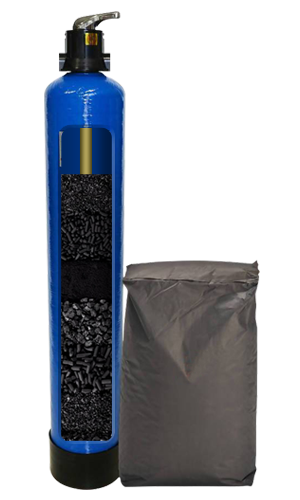
Activated carbon filter is used to purify liquids and gases in a variety of applications, including municipal drinking water, food and beverage processing, odor removal, industrial pollution control.
Activated carbon is produced from carbonaceous source materials, such as coconuts, nutshells, coal, peat, and wood.
The primary raw material used for activated carbon is any organic material with high carbon content. Adsorption is a process where a solid is used for removing a soluble substance from the water. In this process active carbon is the solid. Activated carbon is produced specifically so as to achieve a very big internal surface (between 500 – 1500 m2/g). This big internal surface makes active carbon ideal for adsorption. Active carbon comes in two variations: Powder Activated Carbon (PAC) and Granular Activated Carbon (GAC).
Puritech filtration equipment features an excellent design with high-quality components to offer high performance. Puritech systems are designed for the longest life span with minimum energy consumption. Experience greater savings with lower maintenance and operation costs when you install Puritech filtration equipment.
Carbon filtering is a method of water purification that uses a piece of activated carbon to remove contaminants and impurities, utilizing chemical adsorption. Each piece of carbon is designed to provide a large section of surface area, in order to allow contaminants the most possible exposure to the filter media. Puritech carbon filters are most effective at removing chlorine, sediment, and volatile organic compounds (VOCs) from water. Coal and coconut shell-based activated carbon with various sizes are available to choose from for different applications.
Advantages of A Carbon Filter
- Chlorine Removal
- Chlorine By-Products
- Removal such as THMs
- Bad Tastes and Odors Removal
- Turbidity Removal Herbicides, Pesticides & Insecticides Removal
- Volatile Organic Chemicals (VOCs) Removal
Activated Charcoal and How It Works
Activated charcoal (also known as activated carbon) consists of small, black beads or a solid black porous sponge. It is used in water filters, medicines that selectively remove toxins, and chemical purification processes.
Activated charcoal is carbon that has been treated with oxygen. The treatment results in highly porous charcoal. These tiny holes give the charcoal a surface area of 300-2,000 m2/g, allowing liquids or gases to pass through the charcoal and interact with the exposed carbon. The carbon adsorbs a wide range of impurities and contaminants, including chlorine, odors, and pigments. Other substances, like sodium, fluoride, and nitrates, are not as attracted to the carbon and are not filtered out. Since adsorption works by chemically binding the impurities to the carbon, the active sites in the charcoal eventually become filled. Activated charcoal filters become less effective with use and have to be recharged or replaced.
What Activated Charcoal Will and Won’t Filter
The most common everyday use of activated charcoal is to filter water. It improves water clarity, diminishes unpleasant odors, and removes chlorine. It’s not effective for removing certain toxic organic compounds, significant levels of metals, fluoride, or pathogens. Despite persistent urban legend, activated charcoal only weakly adsorbs alcohol, and it is not an effective means of removal.
It will filter:
- Chlorine
- Chloramine
- Tannins
- Phenol
- Some drugs
- Hydrogen sulfide and some other volatile compounds that cause odors
- Small amounts of metals, such as iron, mercury, and chelated copper
It won’t remove:
- Ammonia
- Nitrates
- Nitrites
- Fluoride
- Sodium and most other cations
- Significant amounts of heavy metals, iron, or copper
- Significant amounts of hydrocarbons or petroleum distillates
- Bacteria, protozoa, viruses, and other microorganisms
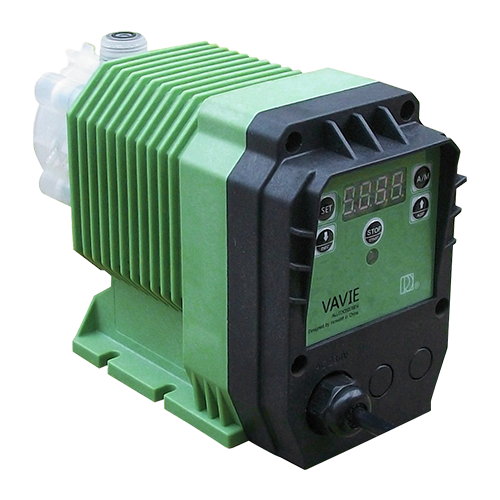
Specifications
- Flow: 0.48 ~ 15.20 L/h
- Pressure: 8.2 ~ 1.8 Bar
Features
- LCD display
- Adjust the flow by key
- Cycle timer
- Frequency or percentage model
- Optional automatic control by an external signal
| Capacity | Flow L/H | Pressure (Bars) | Stroke Frequency (N/Min) | Suction Height (m) | POWER (W) | Weight (Kg) | Tubing (mm) | Voltage VAC |
| 00508 | 0.48 | 8.2 | 90 | 1.0 | 12 | 2.9 | 4×6 | 220V 40 & 60Hz |
| 01008 | 1.03 | 8.2 | 90 | 1.0 | 12 | |||
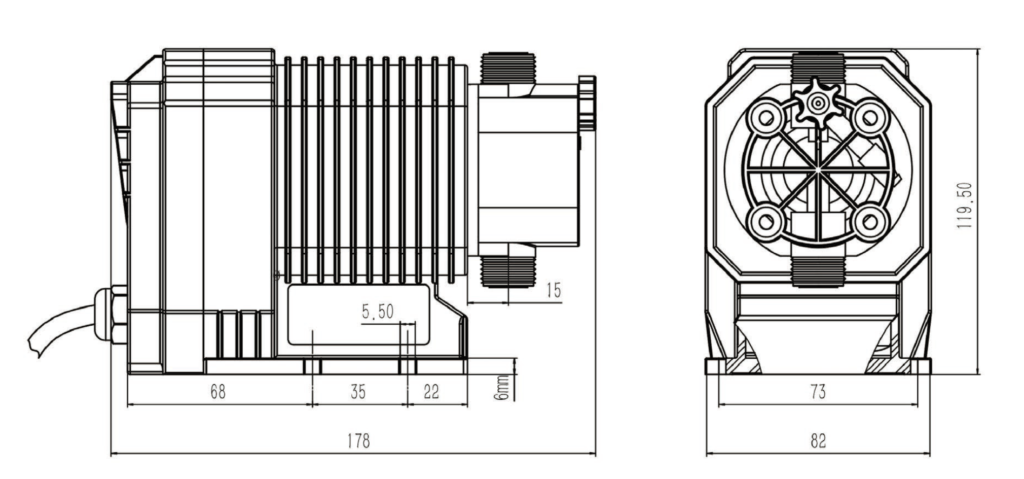
Vertical Multi-Stage Centrifugal Pump
Application Limits of Vertical Pump
- Medium temperature: normal type: 0˚C ~ 68˚C Hot Water type: 0˚C~120˚C
- Ambient temperature: +40˚C
- Max ambient pressure: 1.0MPa
- Advisable to use the motor of a higher power in case that the density or viscosity of medium is above that of water.
- pH: 5 to 8
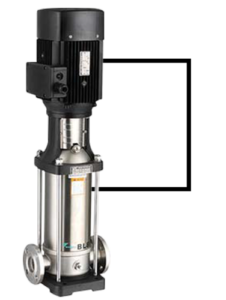
Application Fields of Centrifugal Pump
Water Supply
- Filtration and transfer at waterworks
- Distribution from waterworks
- Pressure boosting in mains
- Pressure boosting in high-rise buildings, hotels, etc.
- Pressure boosting for industrial water supply
Industry
- Pressure boosting
- Process water systems
- Washing and cleaning systems
- Vehicle washing tunnels
- Fire fighting systems
Liquid transfer
- Cooling and air-conditioning systems(refrigerants)
- Boiler feed and condensate systems
- Machine tools(cooling lubricants)
- Aquafarming
- Transfer
- Oil and alcohol
- Glycol and coolants
Water treatment
- Ultra-filtration systems
- Reverse osmosis systems
- Softening, ionizing, demineralizing systems
- Distillation systems
- Separators
- Swimming baths
lrrigation
- Field irrigation(flooding)
- Sprinkler irrigation
- Drip-feed irrigation
Electric Motor
- Full-enclosed and ventilating two-pole standard motor
- Protection class: IP55
- Insulation class: F
- Standard voltage Single phase 220V-50Hz Three phase: 380/400V-50Hz
- Standard motor efficiency: 11kW to 45kW:IE3, other: IE2, specific efficiency value for below table
Application Fields of Centrifugal Pump

Electric Motor
- Capacity: 4000 GPD
- RO Membrane: 2 pcs
- RO Pump: 2HP
- Voltage/Hertz: 220V-240V / 50Hz / Single phase
- Pipe Size: 3/4″ Feed, 1/2″ Permeate, 1/2″ Concentrate, 1/2″ Flush (BSP thread)
Features
- Sediment Filter: 5 Micron Sediment Filter that removes sediments and protects the system.
- High-Pressure Pump: 1HP Motor Vertical Multi-Stage Pump with a flow rate of 1080 Liters/H. High-quality stainless steel Shimgi Pump for long-life usage.
- RO Membrane: One of the industry’s leading brackish water RO elements – Puritech-4040.
- Membrane Housing: 4″x 40″ Stainless Steel Housing with 300PSI maximum operating pressure.
- Pressure Gauges: Glycerin Filled Gauges for monitoring the system’s operating pressure and per liter operating pressures.
- Low-Pressure Switch: Safety device to protect the pump from running dry when there is insufficient water feed pressure.
- Solenoid Valves: To assist with the on/off functionality of the system and automatic membrane flush.
- Flow Meters: One Product and One Waste Flow Meters – Enables operator to actually adjust the product to waste ratio and monitor system’s performance.
- Regulator Valve: One Stainless Steel ANSI 316 Needle Valve – regulates the product to waste ratio (system’s recovery).
- Micro-Computer Controller: A specialized controller designed by Purltech for commercial systems with automatic controls and TDS monitors.
Operating Parameters
- 180 PSI | Max. Feed TDS | 1000 ppm
- Normal Salt Rejection: 99% | Max. Feed Hardness | 15 ppm
- Minimum Salt Rejection: 96% | Feed pH Range | 3.0 – 10.0 ppm
- Operating Temperature: 20˚C – 45˚C | Free Residual Chlorine | 0.1 ppm
- Minimum Feed Pressure: 1.5Kg | Recovery Rate | 60% – 75%









